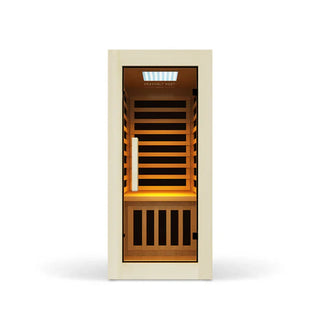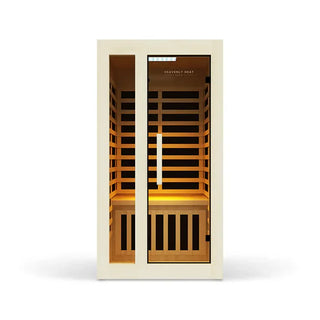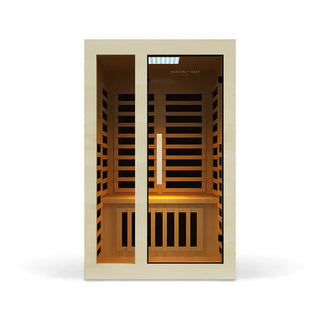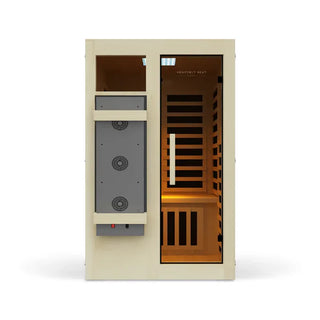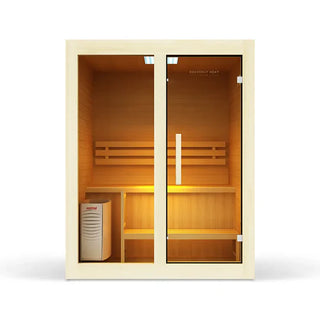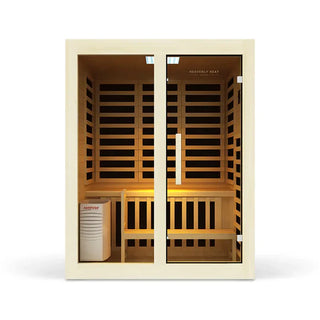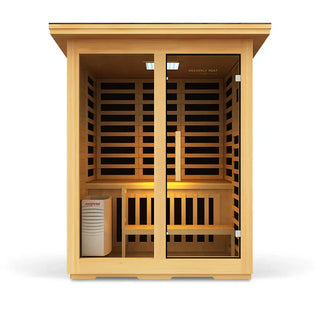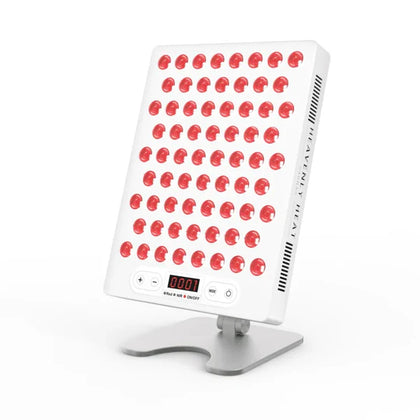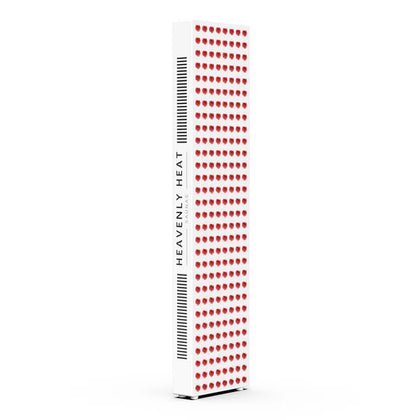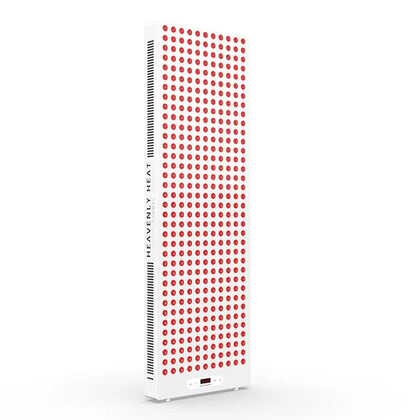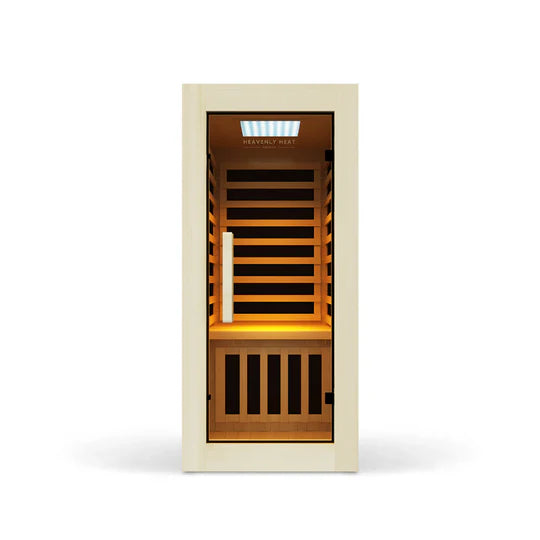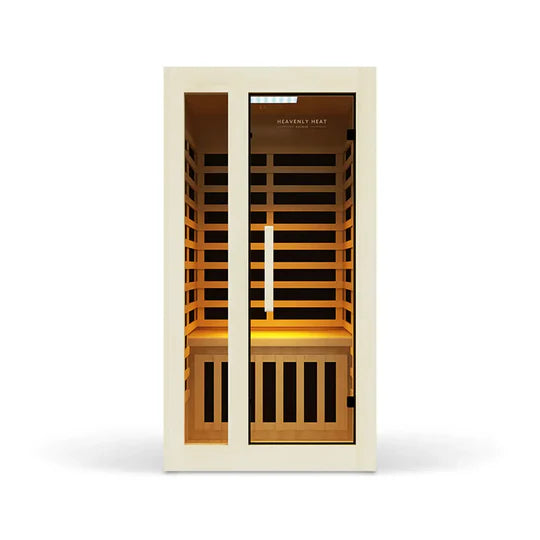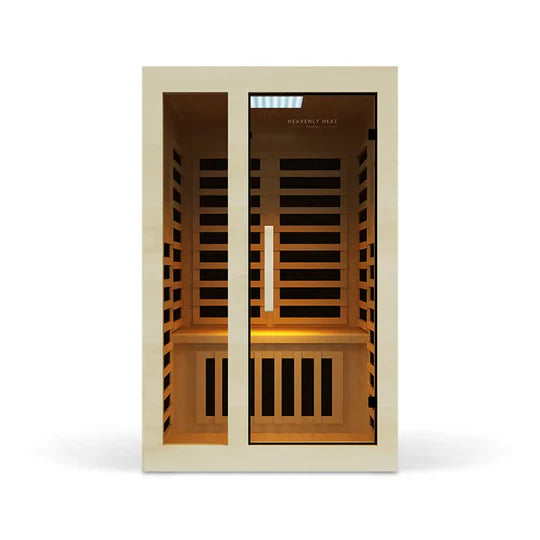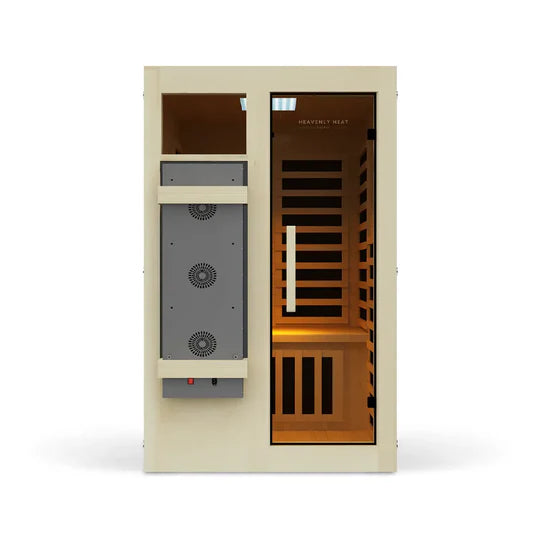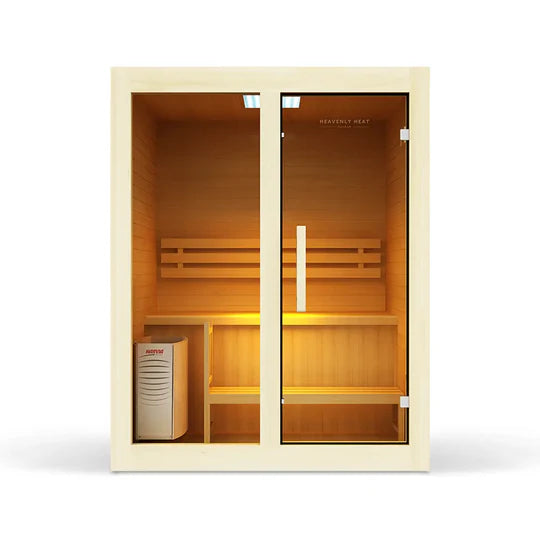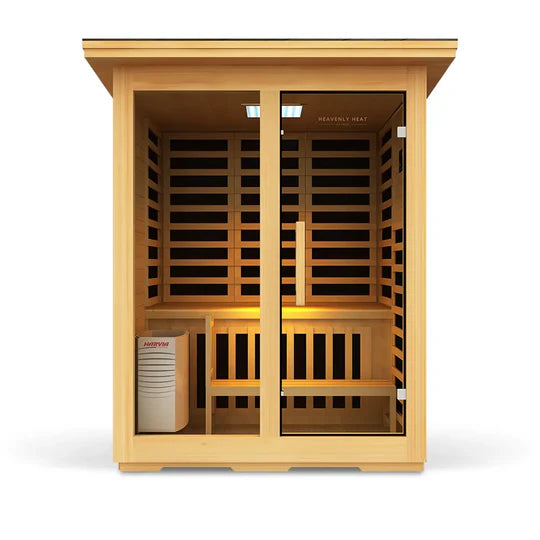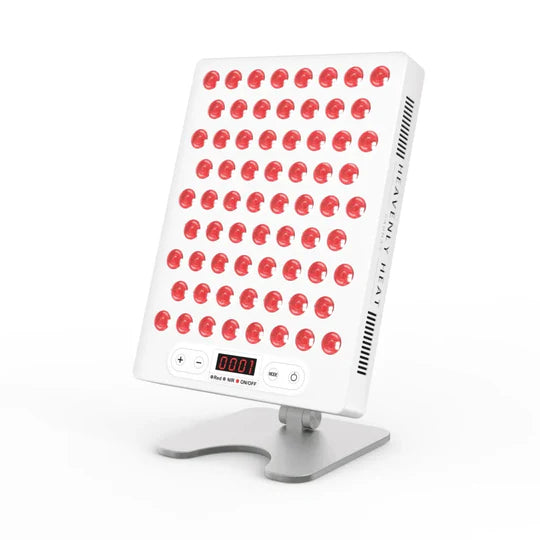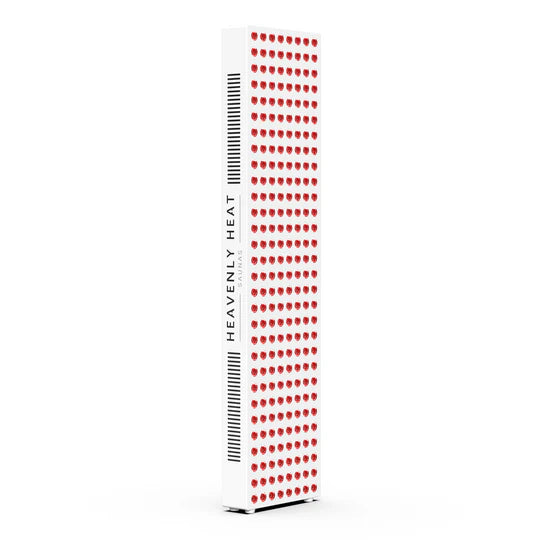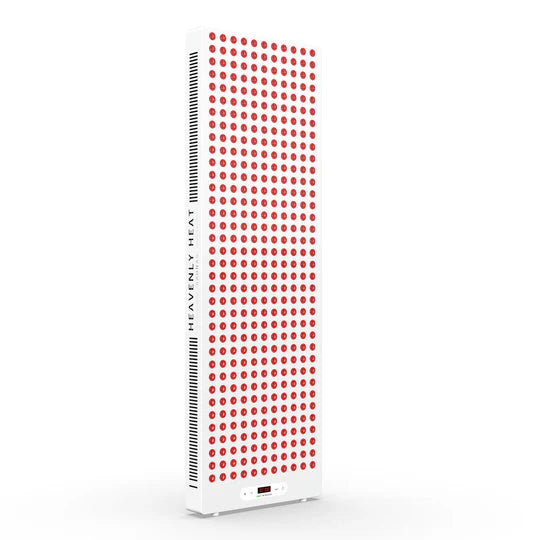How Much Electricity Does a Sauna Use?

Table of contents
Struggling with high electricity bills? Your sauna might be the culprit. Traditional saunas can be energy guzzlers, while infrared models promise efficiency, but how much power do they really use?
Without the right insights, you could be overpaying. In this guide, we break down sauna energy consumption and share expert tips to help you save on electricity.
Key Takeaways
-
Infrared vs. Traditional Saunas: Infrared saunas use less electricity (1–3 kWh per hour) compared to traditional electric saunas (4–6 kWh per hour).
-
Efficiency Matters: Proper insulation, heater efficiency, and session planning help reduce energy consumption.
-
Smart Heating Strategies: Keeping the door closed, minimizing preheating time, and using smart controls save electricity.
-
Cost Considerations: Running a home sauna can cost $10–$50 per month, depending on type and usage.
-
Renewable Energy Options: Solar, wind, and geothermal energy can power saunas for a sustainable alternative.
How Much Electricity Does a Sauna Use?
- A sauna uses more or less electricity based on its type and size: The amount of electricity a sauna uses mainly depends on what kind of sauna it is and how big it is. Bigger or more powerful saunas naturally need more energy to run.
- Small saunas use much less power than big ones: If you have a small home sauna, it will usually use between 1.1 to 8.3 kWh per hour , which is far less than large or commercial saunas that can use much more.
- Infrared saunas save electricity compared to traditional ones: Infrared saunas are known for being energy-efficient. They use 1.1 to 8.3 kWh per hour , while traditional electric saunas use 9 to 13 kWh per hour , which makes them more expensive to run.
- Good insulation and a quality heater help lower power use: How well your sauna is built also matters. Things like good insulation , an efficient heater , and shorter sessions can help reduce how much electricity your sauna needs.
- Infrared saunas heat up quickly and cost less to run: Infrared saunas not only use less power but also heat up faster , which means they don’t stay on as long and cost less to use each time.
- The cost to run a sauna can be as low as 20 cents per hour: Depending on local electricity rates, running a sauna could cost anywhere from $0.20 to $2 per hour . Infrared saunas are usually on the cheaper end of this range.
Feature |
Infrared Sauna |
Traditional Sauna |
| Power Usage (kWh per hour) | 1.1–8.3 kWh |
9–13 kWh |
| Heats Up Faster |
✅ | ❌ |
| Lower Operating Cost |
✅ | ❌ |
What Factors Affect Sauna Energy Consumption?
Sauna Type and Heating Method
- Using Firewood Instead of Electricity Reduces Power Use: Traditional wood-burning saunas rely on firewood, not electricity. This makes them cheaper to run in places where wood is easy to get, and they don’t add to your electric bill.
- Electric Saunas Use More Power When Heaters Are Stronger: How much energy an electric sauna uses depends on the power of its heater. Bigger or stronger heaters mean higher electricity use.
- Infrared Saunas Save the Most Electricity: Infrared saunas work at lower temperatures and are designed to use less power. They are the most energy-efficient option out of all sauna types.
- Steam Saunas Use a Lot of Energy to Keep Water Boiling: Because steam saunas need to keep water hot all the time, they use more electricity than other types. The energy use stays high while they’re running.
- Saunas That Use Two Heating Methods Use More Power: Hybrid saunas use both infrared and traditional heat, which means they need more electricity than saunas with just one method. They give flexibility but are not the best for saving energy.
- If You Want to Save on Energy, Go With Infrared: Out of all sauna types, infrared uses the least electricity. It’s the best choice for people who care about energy bills and power use.
Duration and Frequency of Use
The longer and more frequently a sauna is used, the more electricity it consumes. A single extended session can use less power than multiple shorter ones since the heater doesn't need to reheat as often.
Planning sauna sessions efficiently, such as scheduling back-to-back use, reduces unnecessary preheating time and overall energy costs.
Insulation and Room Size
Proper insulation reduces heat loss, improving energy efficiency. High-quality insulation, such as fiberglass or mineral wool, helps retain warmth, requiring less electricity to maintain temperature.
Larger saunas need more power to heat up, making a compact, well-insulated design the most efficient.
Investing in thicker walls or reflective insulation can further reduce heat loss and overall energy consumption.
Ambient Temperature and Ventilation
- When the weather outside is cold, the sauna uses more electricity: In colder surroundings, the sauna heater works harder to keep the space warm, which leads to higher energy use. That’s why having proper insulation makes a big difference.
- If too much air flows in, the heat quickly escapes: Good ventilation is important, but too much airflow lets heat out fast, forcing the sauna to use more energy to stay hot.
- If air doesn’t move enough, it traps moisture and wastes energy: On the other hand, not enough ventilation causes moisture buildup, which makes the sauna feel damp and less efficient in using heat.
- In winter, the sauna always needs more power: As temperatures drop during winter, the sauna’s energy demand naturally goes up to maintain warmth.
- Adjusting airflow the right way helps save power: By controlling how much air goes in and out, you can keep more heat inside and reduce how much energy the sauna needs.
Heater Efficiency and Power Rating
Sauna heaters vary in efficiency based on their design and wattage. A high-wattage heater may seem like an energy drain, but it can be more efficient if it heats the sauna quickly and then maintains the temperature with minimal effort.
Choosing the right heater size for the sauna ensures efficient performance without excess power usage.
User Behavior and Heat Retention Strategies
How you use your sauna affects its energy consumption. Keeping the door closed prevents heat loss, while minimizing preheating time avoids wasting electricity.
Saunas made from heat-retaining materials like cedar or hemlock maintain warmth longer, reducing the heater's workload.
Ensuring that the door seals properly and adjusting ventilation to maintain temperature stability also contribute to efficiency.
Energy-Saving Features and Smart Controls
Modern saunas come with smart features that reduce electricity costs. Programmable thermostats allow precise temperature settings, preventing wasted energy.
Smart sensors adjust heating based on usage, while automatic shut-off features prevent unnecessary power draw.
Some models include Wi-Fi-enabled controls, allowing remote scheduling so the sauna is only heated when needed. These features help maximize efficiency without sacrificing comfort.
Does Preheating a Sauna Waste Energy?
- Preheating uses electricity, but not always more than you think: Preheating a sauna does use power, but how much depends on the type of heater, how well the sauna is built, and how long you leave it on before using it.
- A well-insulated sauna keeps heat in and uses less electricity: If your sauna holds in heat properly, it doesn’t have to work as hard to stay warm, which saves energy during preheating and use.
- Heating slowly at low temperature doesn’t really save power: Trying to preheat at a lower temperature may sound smart, but it just takes longer and can end up using the same or even more electricity.
- Leaving the sauna on after use wastes electricity for no reason: If you forget to turn it off, the sauna keeps using power even when you're not inside. Switching it off right after you're done avoids that waste.
- Only heating when you’re ready to use it is the most energy-saving choice: Keeping the sauna warm all day burns through electricity. It's better to heat it just before you plan to use it, it’s smarter and cheaper.
How Does Sauna Power Usage Compare to Other Appliances?
- Saunas use a lot more power than things like your fridge: A typical fridge uses only 350–780 watts, but a sauna can draw anywhere from 1,000 to 6,000 watts. That means just turning on your sauna uses more electricity than most daily appliances.
- Saunas eat up electricity fast, even if used for a short time: Even though you may use a sauna for just 15–30 minutes, it draws a lot of power in that short span. It’s like a power surge compared to something like an air conditioner, which uses less power but runs for longer.
- Big appliances like stoves and dryers use similar power, but for less time: Electric stoves and clothes dryers also use high wattage (1,000–5,000 watts), just like saunas. But since they’re usually on for only a few minutes, they don’t hit your electricity bill as hard.
- Looking at numbers makes it clear how much saunas really use: When you compare saunas to other appliances in terms of power usage, the difference becomes obvious. Seeing the numbers side-by-side helps show how energy-hungry saunas really are.
Appliance |
Power Usage (Watts) |
LED Bulb |
10–20 W |
Refrigerator |
350-780 |
Microwave |
600–1,200 W |
Air Conditioner |
1,500–5,000 W |
Electric Sauna |
1,000–6,000 W |
Electric Stove |
1,000–3,000 |
Clothes Dryer |
1,500–5,000 |
How Much Does It Cost to Run a Sauna?
The cost of running a sauna depends on type, size, and frequency of use. To estimate expenses, multiply the sauna’s wattage by the hours used, then by your local electricity rate.
Home saunas typically cost between $10 to $50 per month, with infrared models being the most energy-efficient.
Winter use can drive costs up due to longer heating times. Factors like insulation, heater efficiency, and session structure all influence the final electricity bill.
What Are the Long-Term Costs of Running a Sauna?
- Your electricity bill will decide most of the cost: The more you use your sauna and the higher your local power rates, the more money you’ll spend in the long run.
- Running your sauna at night can save you money: If your electricity company offers cheaper power at night (off-peak hours), using the sauna then can help lower your monthly bills.
- Bad insulation means you're losing heat and money: When your sauna isn’t well insulated, heat escapes quickly, and that means the heater runs longer and uses more power. Better insulation keeps costs down over time .
- Timers stop your sauna from wasting power: If you forget to turn off the sauna or heat it too early, you waste electricity. A simple timer can fix that and cut long-term costs.
- Energy-saving heaters use less power every time: Modern, energy-efficient heaters don’t need as much electricity to do the same job, which makes a big difference month after month.
- Good airflow and smart heating save more than you think: Things like proper ventilation and heating your sauna just before use not too early, can lower your energy use without sacrificing comfort.
Can You Power a Sauna With Renewable Energy?
- Solar panels can run your sauna if you get enough sunlight: In sunny places, solar energy is a smart choice to power a sauna. But you'll need enough panels and battery backup to keep it going when the sun isn’t shining.
- Wind power can keep your sauna hot in windy areas: If your area gets steady wind, wind turbines can give you clean, reliable energy to heat your sauna without needing the grid.
- The heat from the ground can warm your sauna naturally: Geothermal energy uses heat from deep underground. It’s a steady and low-maintenance way to keep your sauna warm all year round.
- Using both sun and wind gives you power even when off-grid: When you're away from the main power grid, combining solar and wind energy helps make sure your sauna always has enough power, even if the weather changes.
FAQs
How Does the Age of a Sauna Affect Its Energy Consumption?
Older saunas use more electricity as insulation wears down, allowing heat to escape and forcing the heater to work harder. Aging heating elements also lose efficiency, increasing power consumption. Regular maintenance, such as sealing gaps and replacing old parts, reduces energy waste. Without it, a 10-year-old sauna can use significantly more electricity than a new one. Proper care and upgrades improve efficiency, saving energy and money.
Does the Location of the Sauna Impact Its Energy Consumption?
The location of a sauna significantly affects its electricity usage. Indoor saunas are more energy-efficient than outdoor ones because they heat up faster and are shielded from harsh weather. Saunas inside well-heated homes use less power, as they start at a higher ambient temperature. Proper insulation is also crucial, as it traps heat and reduces energy consumption. In contrast, outdoor saunas, especially in cold weather or near external walls, require more electricity to maintain warmth. Choosing an optimal location can lower energy costs while preserving comfort.
Can Using a Sauna During Off-Peak Hours Help Reduce Electricity Costs?
Using a sauna during off-peak hours can lower electricity bills. Power companies charge higher rates during peak hours and reduce them during off-peak times, typically late at night or early in the morning. Running your sauna during these hours can cut energy costs by 20–50%, depending on your electricity provider. To maximize savings, check your provider’s off-peak schedule and plan accordingly.
Are There Differences in Energy Usage Between Different Sauna Materials (e.g., Wood vs. Infrared Panels)?
Saunas vary in materials, affecting energy usage. Infrared saunas use less electricity than traditional wooden ones by heating the body directly. Among infrared options, carbon panels are more efficient than ceramic, as they distribute heat evenly. In wooden saunas, dense woods like cedar and hemlock retain heat better, and thicker walls improve insulation, reducing electricity use. For efficiency, infrared panels and well-insulated wood structures are optimal, balancing warmth with lower energy costs.


